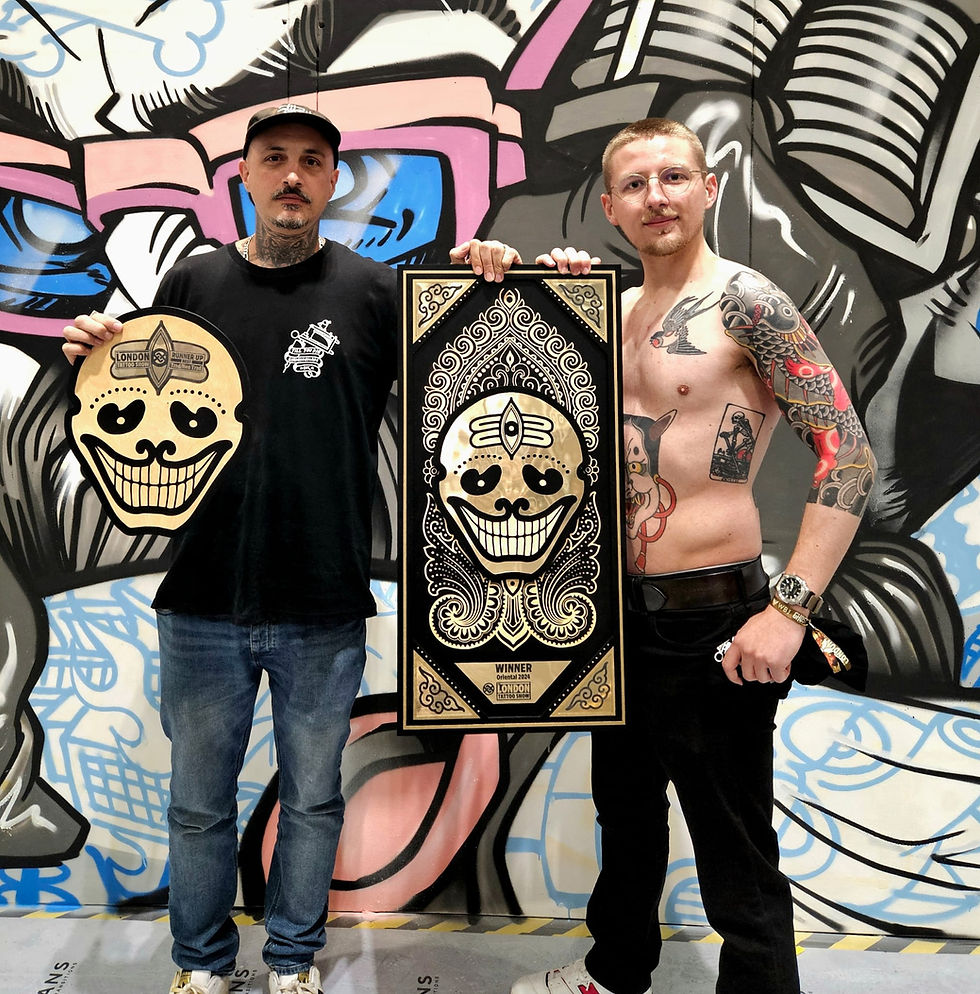A bit of history about Japanese tattoos
- Leonardo Flama

- Aug 6, 2024
- 2 min read
The history of Japanese tattoos goes back centuries. The art of Japanese tattooing, known as irezumi or horimono, has a very long tradition in Japan and during time it influenced tattoo cultures all over the world.
Today I though I could write a bit about that, as I often get asked by customers about this beautiful and very interesting tattoo style. I'll give you a bit of history about Japanese tattoos in Japan and Europe.
The first Japanese tattoos, started appearing in Europe towards the end of the 19th century; specifically when European started travelling to Japan. Thanks to these travels, people started discovering a different culture and different art forms. Japanese tattoos was one of them.
The fascination with Japanese tattoos was growing more and more, to a point in which western tattoo artists were incorporating designs, subjects and techniques into their work. Motifs such as koi carps, dragons, geishas and cherry blossoms became very popular for European clients, as these were subjects never seen before.
One of the most important contemporary Japanese tattoo artist is Horiyoshi III, a true master of the Japanese tattoo. His work has inspired and keeps inspiring generations of tattoo artists around the world: his influence is undeniable.
Japanese tattoos in Europe have been perceived differently, over the years. Due to the association with the Yakuza, Japanese tattoos were viewed with suspicion and were often stigmatised in Europe.
Only in recent years Japanese tattoos have gained acceptance in Europe, and they're now seen as a form of art. Japanese tattoos are now very requested in Europe and clients are often educated on the matter; this means that there is a genuine interest and respect towards this art form.
Also in Japan it appears that the mentality is changing; after the Tokyo Olympics, tattoos became more tolerated; there are more infrastructures available for tattooed people and rules are not as strict as before, thankfully (only a few years ago the government proposed a ban for tattoo artists who didn't have an anatomy degree).
The history of Japanese tattoos in Japan goes back centuries: known as irezumi or horimono, it has its roots in the Edo period and was used to mark criminals with more or less visible marks (depending on the felony), as a form of punishment. Over time this punishment evolved more into an art form practiced by skilled tattoo artists who would use wood block prints as designs for their human canvases, often covering the whole body.
Every Japanese tattoo subject hides a meaning behind it. If you want to know more about meanings as well, I'd suggest you a book called "Waboripedia". It's extremely useful and interesting.






Comments